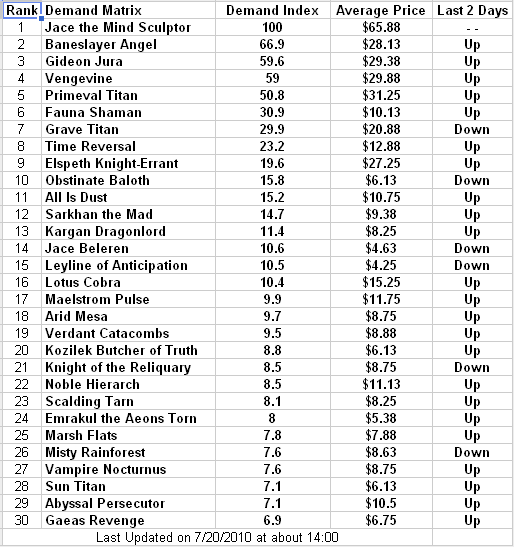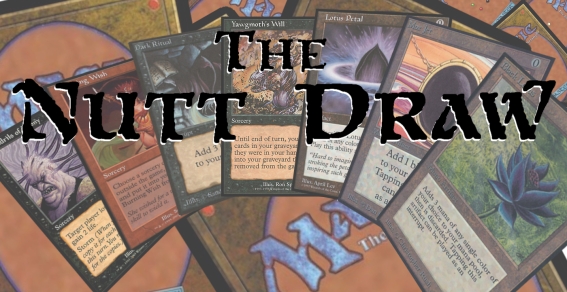Are you a Quiet Speculation member?
If not, now is a perfect time to join up! Our powerful tools, breaking-news analysis, and exclusive Discord channel will make sure you stay up to date and ahead of the curve.
This week I’m going to take a short break from the Demand Matrix concept while I work on some refinements to the calculations and add in some additional data points. I’m going to focus in on some of the other results I’ve gleaned from my obsessive collection of sales and pricing data. Why do I do all this? It’s all for you. For which I’m thankful. Because before you, I was just a geek obsessed with numbers but now I’m a contributing member of society.
Specifically I’m going to more formally present you with some interesting comparison details regarding the recent release of M11 as well as some EV comparisons of the sets in Standard.
I’m still working on correlating the presales of sets to the time the chased cards are spoiled to pre-release attendance to booster pack sales but I need a few more years of data. In the mean time we can look at how the time spoiled effects the presales of singles on eBay.

As you can see, M11 trended below any other set in the last year. There could be many factors. In addition to the amount of time spoiled the fact that it’s a base set could be an issue or that only half of M11 is new (plus functional reprints) etc. The only set that is close to the same overall sales total is Worldwake which sold around 26% more by card volume, but only slightly more by dollar amount. I’ve added in some anecdotal pricing-over-time figures to show that the values at prerelease tend to be wrong, and because with more data we can better predict some pricing tolerances. We may also be able to spot cards that may be anomalously over- or under-valued.
The other focus of this week’s article is Pack EV for which I’ve received many requests. There are two different ways that my automated spreadsheets calculate EV. When I’m looking at my presale data I ignore any values under 75 cents. Due to some additional complexity on the other spread sheets, the alternate and more thorough method of calculating EV doesn’t filter out lower priced cards. Since the results are being used for comparison purposes and not strict values, the information is still relevant and useful. The following values are based on eBay completed sales.

I should probably mention here that the first line, “Set Purchases as Singles” is a total of the average price of each card if purchased individually. This really isn’t the recommended way to buy sets, and I’m sure you could get a better overall price then what is listed, but as with nearly everything else I calculate, this is all about how each item compares to one another. The next line “# of Packs Needed” is the exact amount of packs it would take on average to complete any one set. Obviously you’re going to end up with a lot of duplicates since the mythics are about twice as rare as a top line rare card, so for that I’ve added in the 4th line. “Total Value of Singles from Packs” is the average cumulative price you would expect to see if you had opened the aforementioned amount of packs needed to complete one set. In case you might be wondering, for a 249 card set, you hit a playset of commons around the 44th pack, and uncommons around the 80th pack. One major indicator that a set is overvalued is the 5th line, “Value of Singles vs packs." When that number is over a value of 75% or so (this is an estimation, more data is needed to confirm) then the set is overvalued. Why 75%? 75% represents a median point between the cost of a box and the retail price of that box. This isn’t exact, and box prices can fluctuate depending on the store and the supply chain, but the general theory I am working to prove is that any in-print set has a maximum cumulative pricing threshold. Prices can go above this level, but they will always be tugged down toward it. However, they can certainly drop below this level, and with little immediate consequence. Down the line though we could end up with a Dark Depths situation when everyone needs cards from a long-abandoned set.
It’s interesting that the release of M11 actually brought the EV of M10 up quite a bit, so much so that I went back to check for errors in the calculations. I expect that the M11 and M10 EV to drop over time and become more in line with Zendikar, but the hype is still high and the cards are still overpriced in total. I just don’t know yet where they will land. We’re either going to end up with a Worldwake situation where we really only have one valuable card and then a bunch that are undervalued, or something like Zendikar where there are lots of mid-value cards but nothing too huge. Another interesting aspect to consider about M11: Since the core sets are being released every year and there is an overlap in legalities, we have an all new flow of cards into the metagame. We almost have a rolling base set which is, for a few months of the year, comparable in size to the sets back in the olden days. It’s going to take a few years before these values really stabilize into something more predictable precisely because it’s more dynamic.
Please sound off in the comments if there are other specific relational data analysis you might be interested in.

Born in Seattle, Washington, Chris McNutt has been playing and collecting Magic: The Gathering since Unlimited Edition. As an active player, tournament organizer and judge he regularly scrubs out of Pro Tour Qualifiers but inexplicably cleans up at the local draft tables. When not net decking Chris is either busy working as an Information Technology Sales Rep or spending time with his family. Other non-magical pastimes include playing guitar and an unhealthy number of video games. Cursed with an undying love of generating spreadsheets purely for "fun", he'll be crunching the numbers each week in order to serve up delicious data burritos to the salivating, hungry readers of Doubling Season.






I've been looking for a source of eBay data to comb through myself to try to trend price spikes against tournaments and seasons, how do you pull it?
At this time all my prerelease data is just copy/pasted from ebay.com sales and into excel to be manipulated. Additional information was gathered from TeraPeak.com.
I have been selling packs of ROE online. A lot of time I keep packs that I win, but the rares "seemed worse" and your data here tends to bear that out. I really like the "value of singles vs. packs" data.
I have been wondering if we can use card sales as a predictor for cards / decks that will be popular for upcoming events. If you have the time it would be sweet to see a demand matrix for the pool of Legacy-legal cards over the last week or so and see how the data compares with Grand Prix Columbus deck choices.
@Jason Barnett.
Thank you so much for reading and commenting! I've been thinking of how to analyze data to glean predictors… I don't know if sales data will be enough to predict cards/decks prior to popularity, though with enough data, something might be possible. When looking for smaller and smaller spikes in sale, and not having access to all the singles sales out there, the false positives would probably be more frequent then the real indicators. I do think though that the more information and sources i feed into my calculations the better results i'm going to have. However, since this site is dedicated to the financial aspect of MTG deck trends may end up being a byproduct of what we are really looking to discover. The Demand Matrix will be expanded to cover other formats as well, but there is a lot more work I have to do on the spread sheets to make it useful. I'm also working on learning some other ways to crunch the data that is better suited to the task.